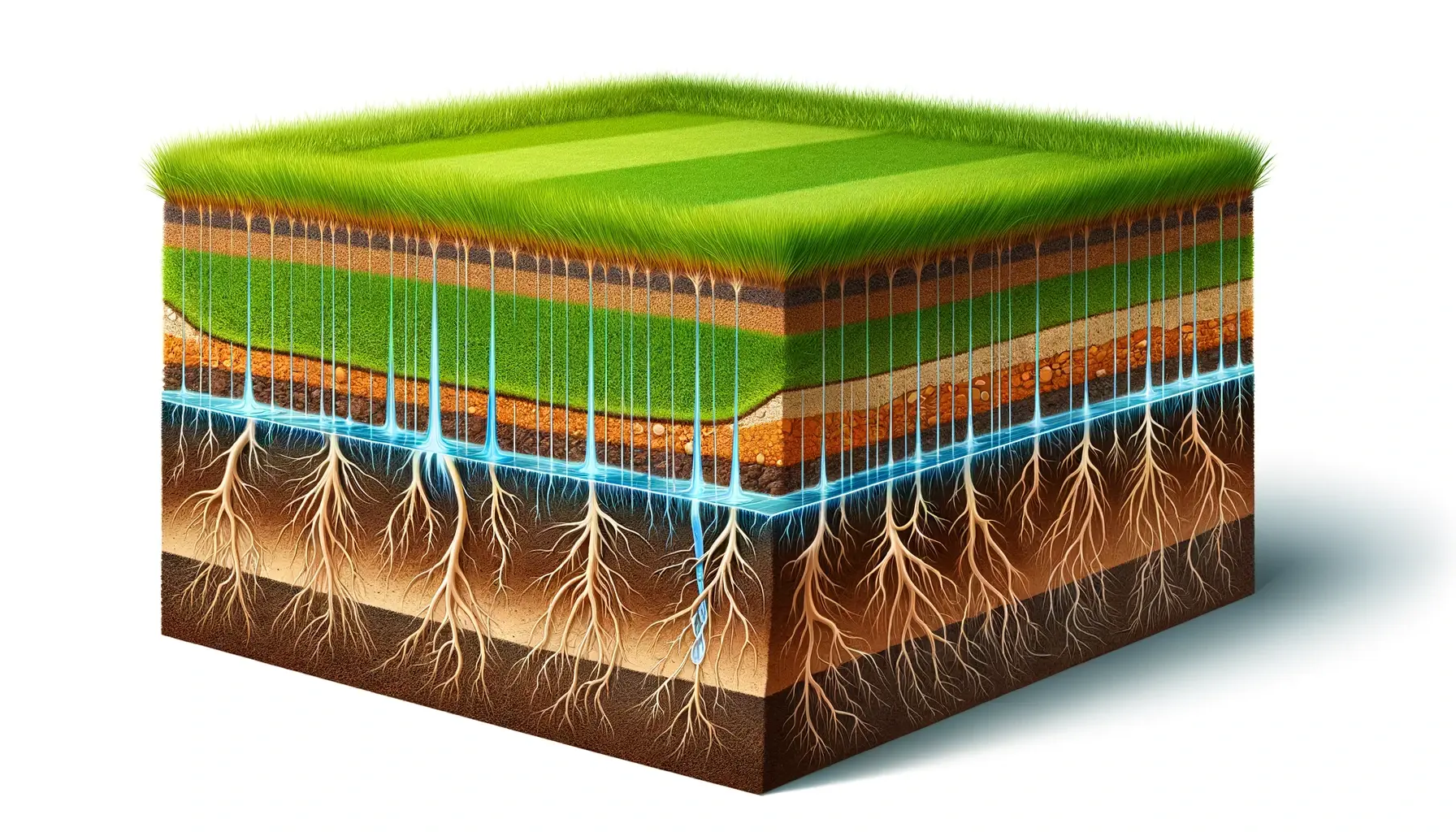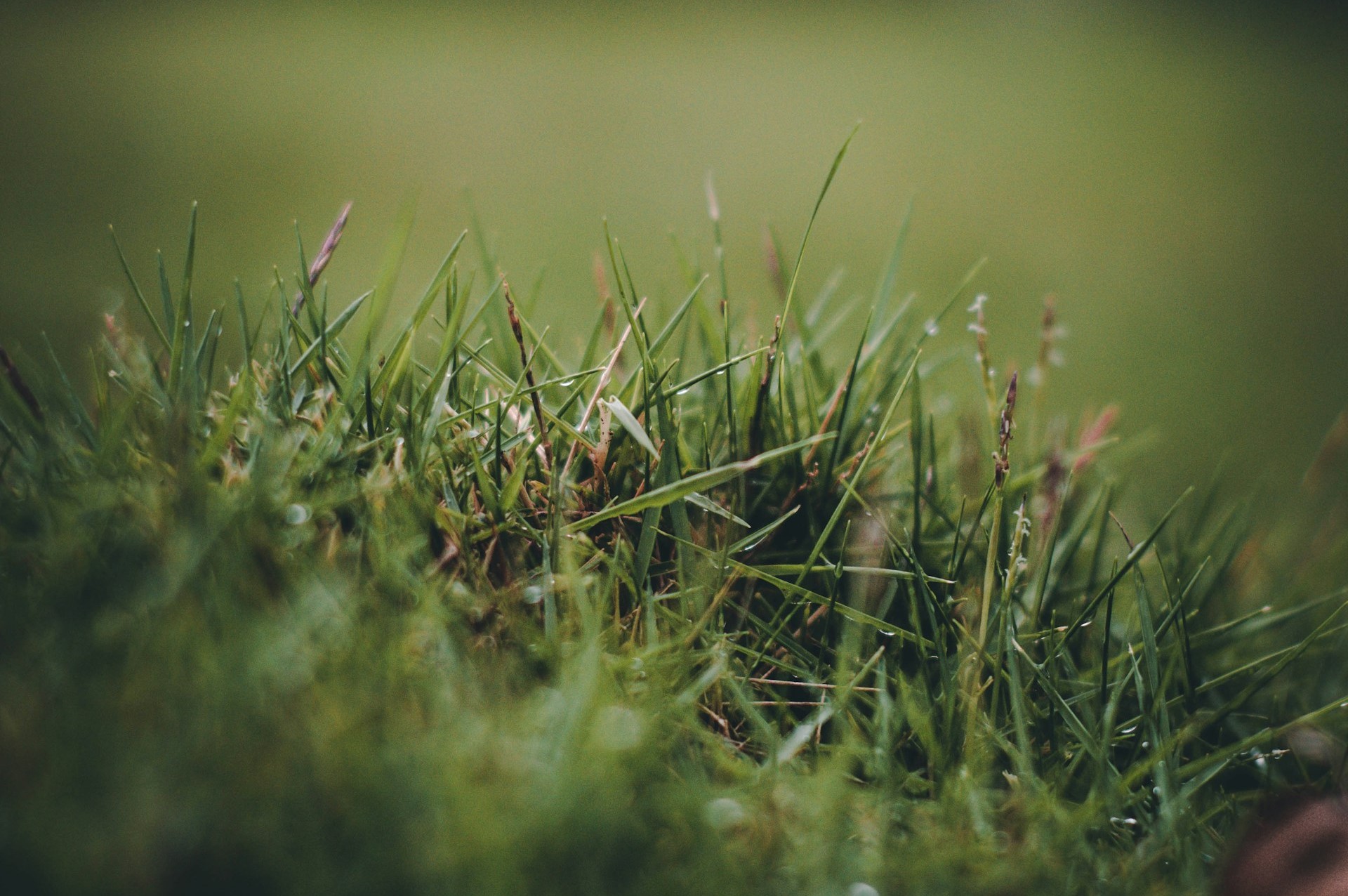In this blog post, we’ll cover:
ToggleIntroduction
A lush, vibrant lawn is the crown jewel of many American homes, providing a soft green carpet for summer fun, enhancing curb appeal, and even contributing to the local ecosystem. But achieving and maintaining a healthy lawn is not just about regular mowing and fertilization; it’s also about knowing the best time to water your lawn to ensure the grass roots receive the right amount of moisture without wastage or harm. In this article, we’ll explore the optimal watering times and methods to ensure your lawn remains in tip-top shape.

Understanding the Best Time to Water Your Lawn
The consensus among lawn care professionals is that the ideal time to water your lawn is early morning, before 10 a.m. This timing takes advantage of the cooler temperatures and calm winds which reduce evaporation and increase water absorption. Morning watering also makes the most of the grass’s natural growth cycle, as lawns tend to absorb and recover from environmental stress better during this time.
How Temperature, Wind, and Sun Intensity Affect Water Absorption and Evaporation
Let’s delve into some scientific reasoning behind the preferred watering time:
- Temperature: As the day heats up, water is lost to evaporation before it can soak deeply into the soil. A watering schedule that avoids the midday heat ensures that more moisture reaches the roots.
- Wind: During the early hours, winds are generally lighter, which means water is less likely to be blown away from the desired watering zone or turned into mist that evaporates before hitting the ground.
- Sun Intensity: In the morning, the sun is less intense compared to midday, so water droplets have a chance to saturate the soil instead of evaporating.

The Impact of Incorrect Watering Times
Let’s look at the risks associated with watering at the wrong times:
- Midday: Watering during the midday leads to significant water loss due to evaporation. Furthermore, those water droplets on grass blades can act like mini magnifying glasses, potentially scorching your grass under the intense sun.
- Night: Watering at night can seem like a good idea to avoid evaporation, but with no sun to help dry out the blades, the water sits for hours. This can invite fungal diseases and create an environment prone to other lawn pests.
Risks of Improper Watering Times
| Wrong Time to Water | Risks |
|---|---|
| Midday | High evaporation, potential grass burn |
| Evening/Night | Increased risk of fungal disease |
Exceptions to the Rule: Climate and Grass Type
While the general rule applies to most situations, there are exceptions. Climates with high temperatures and low humidity levels might necessitate more frequent watering outside of the early morning window.
The type of grass also plays a role. For instance, cool-season grasses may need different watering care compared to warm-season grasses, particularly in regions where the temperature changes are extreme. Some grasses are more drought-resistant or heatwave-tolerant and can withstand longer periods without water.
Climate Considerations:
- High Heat and Low Humidity: May require additional watering sessions in the early evening to prevent lawns from becoming stressed or going dormant.
- Sandier Soils: Because sand is more porous, it requires more frequent watering – although this must be carefully managed to avoid shallow root growth.
Climate and Lawn Type Watering Considerations
| Climate/Grass Type | Watering Strategy Changes |
|---|---|
| High Heat/Low Humidity | Additional early evening watering sessions |
| Drought-Resistant Grass Types | Less frequent watering |
| Sandier Soils | More frequent watering with careful monitoring |
The Second-Best Time to Water Your Lawn
If you’re unable to water in the morning due to restrictions or personal schedule constraints, the second-best time to water your lawn would be late afternoon or early evening, around 4 p.m. to 6 p.m. This allows the grass to dry before the dew falls, as night-time moisture can again lead to disease. Yet, it’s crucial to avoid watering too late to prevent opening the door to fungal infections and other harmful lawn diseases.
Importance of Avoiding Late Night Watering:
- In climates where the evenings are still warm and dry, a bit of extra moisture won’t hurt, as long as it doesn’t get the lawn too soggy before nightfall.
- Moisture should not persist on the blades for extended hours, so ensure your lawn has time to absorb and dry prior to nighttime.
Optimal Watering Times
| Time Frame | Best Time to Water | Second-Best Time to Water |
|---|---|---|
| Morning | Before 10 a.m. | Not applicable |
| Late Afternoon | After 4 p.m. (If morning is not possible) | Not applicable |
| Early Evening | Before 6 p.m. (If morning is not possible) | Not applicable |
In the following parts of this article, we will further explore how to properly water your lawn, including how deep the water should soak into the soil and how to measure this, considerations for a newly seeded lawn, various methods for watering your lawn, a month-by-month guide adjusting for seasonal changes, and the immense benefits that come with watering your lawn at the best time.
For more insight into lawn care, particularly how to maintain a vibrant lawn in specific areas like Texas, feel free to browse through useful resources such as “how-to” guides on keeping your grass green in the Texas heat, or discovering the ideal height to mow grass in the DFW area.
Keep in mind that proper lawn care is not just about sprinkling some water on the grass; it’s about a concerted and informed effort that aligns with the climate, grass type, and nature’s schedule for a thriving, beautiful lawn that becomes a source of pride for any homeowner.
How to Properly Water Your Lawn
Watering your lawn effectively goes beyond just turning on the sprinklers. It’s about ensuring that water reaches the roots, which are generally about 4-6 inches deep for most grass types. Therefore, the goal is to moisten the soil to at least this depth, encouraging deep root growth and a resilient lawn.
Steps for Deep and Efficient Watering:
- Measure Soil Moisture: Use a screwdriver or a similar tool to check if the soil is moist to the correct depth. If the screwdriver slides easily into the soil for 6 inches, your lawn has received enough water.
- Amount of Water: On average, your lawn needs 1 to 1.5 inches of water per week, which can come from rainfall or manual watering. To measure how much water your sprinklers provide, place tuna cans across your lawn and measure the water depth after a watering session.
- Avoid Runoff: If you notice water running off your lawn, it’s a sign to stop watering for a bit and let the soil absorb the moisture before resuming. You want to avoid shallow watering that only wets the surface and encourages shallow roots which make the lawn less drought-tolerant.
- Even Distribution: Ensure that your sprinkler system is properly calibrated and covers the lawn evenly. Overlapping watering patterns slightly can help avoid dry spots.
Watering Depth Guide
| Watering Technique | Soil Depth Reached | Impact on the Lawn |
|---|---|---|
| Shallow | 1-2 inches | Encourages shallow roots |
| Optimal | 4-6 inches | Promotes deep root growth |
| Excessive | 6+ inches | Wastes water and can oversaturate the soil |
Implementing a watering schedule with a timer can help maintain consistent watering times. Even better, a smart controller can adjust your watering based on weather conditions, ensuring that your lawn isn’t watered when it’s already raining. And for those areas with water restrictions, smart irrigation systems can also help manage water use more efficiently.
Watering a Newly Seeded Lawn
Newly seeded lawns or those where sod has just been laid down have different watering needs. The key here is to keep the top inch of soil consistently moist but not soggy which helps seeds to germinate and sod to establish roots without washing seeds away or causing root rot.
Tips for New Lawns:
- Misting: Water lightly several times a day to maintain the necessary moisture without causing runoff or erosion.
- Gradually Reduce Watering: As seeds start to germinate and grow, slowly reduce the watering frequency to encourage deeper rooting.
- Avoid Walking on the Lawn: Keep traffic off the new lawn to prevent soil compaction and give fragile new blades a chance to grow.
Methods for Watering Your Lawn

There are several techniques and systems that you can use to water your lawn, each with its benefits and constraints. Here are some common methods:
- Sprinklers: Can be stationary, oscillating, rotating, or traveling types. Each is suitable for different lawn sizes and shapes.
- Drip Irrigation: Efficient for watering plants directly at their roots but less practical for large lawns.
- Soaker Hoses: Good for smaller or irregularly shaped lawns and deliver water directly to the soil with minimal evaporation.
- In-Ground Systems: Can be the most efficient if properly installed and maintained, especially when combined with a rain sensor to avoid unnecessary watering.
Lawn Watering Methods
| Watering Method | Suitability | Efficiency |
|---|---|---|
| Sprinklers | Varying lawn sizes and shapes | Dependent on type and adjustment |
| Drip Irrigation | Garden beds, not typically for large lawns | High |
| Soaker Hoses | Smaller, irregular lawns | Moderate to high |
| In-Ground Systems | All Lawn sizes, best with smart controls | High, with proper installation |
If you are looking to set up an irrigation system or need advice on the best methods to water your lawn, consider seeking expertise from professional lawn care services in your area, such as those offered in Irving, TX. Professional services can provide personalized advice tailored to your lawn’s specific needs and local environmental conditions.
Lastly, adapting your watering needs based on the season is crucial. In the third and final part of this article, we will detail a comprehensive Seasonal Lawn Watering Guide to ensure your lawn gets optimal water year-round. We will also wrap up with key takeaways that will transform your lawn watering practices, promoting a verdant and healthy landscape outside your home.
Seasonal Lawn Watering Guide
Your lawn’s watering needs will fluctuate with the seasons due to changes in temperature, natural precipitation, and the grass’s growth cycle. Adapting your watering routine to match these changes is an integral part of responsible lawn care.
Spring:
- Begin with light watering as the lawn starts to green up and increase frequency as temperatures rise.
- Rely on rainfall as much as possible but supplement with watering during dry spells.
Summer:
- Water deeply and less frequently to encourage deep root growth that withstands summer heat and drought.
- Watch out for signs of overwatering (soggy soil, yellowing grass) and underwatering (dry, brittle grass).
Fall:
- Reduce watering frequency as temperatures drop and natural rainfall increases.
- Prepare the grass for winter by easing off irrigation and allowing it to harden off.
Winter:
- In most climates, watering should be minimal or unnecessary as lawns enter dormant status.
- For warm-season grasses in milder climates, occasional watering during unusually dry periods might be needed.
Monthly Watering Recommendations
| Month | Watering Strategy |
|---|---|
| Spring | Start light, increase as needed based on temperature and rainfall |
| Summer | Deep, infrequent waterings to maintain moisture during heat and drought |
| Fall | Gradual reduction in preparation for winter |
| Winter | Minimal to none, unless the climate dictates otherwise |
By tailoring your watering to the season, you not only conserve water but you also support your lawn’s natural growth cycle. Furthermore, employing a smart water-saving system or in-ground irrigation with rain sensors can make this process more efficient and environmentally friendly.
Conclusion
Watering your lawn at the right time and in the right way is not just an act of lawn maintenance; it is a critical practice that sustains the overall health and beauty of your landscape. Early morning remains the best time to hydrate the lawn, to optimize moisture absorption and minimize disease risks. Evening watering is a distant second, provided it is done early enough to allow the lawn to dry out before nightfall.
Ensuring the water penetrates to the right depth is key to encouraging deep, strong root systems capable of withstanding shifts in weather and environmental conditions. For those establishing new lawns, constant moisture levels are imperative for seed germination and sod rooting, albeit with a different approach than established ones.
Remember, the efficiency of watering can be significantly improved with methods like in-ground systems, especially when combined with smart controllers tailored to your lawn’s unique conditions and locale, like those services found in Arlington, TX.
By understanding the intricacies of lawn watering, homeowners can ensure a thriving, resilient lawn that enhances their property’s value and aesthetic appeal. Regular maintenance, seasonal adaptations, and smart watering practices will not just conserve water and save money but also contribute positively to the environment.
With this knowledge, you can turn your lawn into an envy-worthy expanse of green, staying lush and healthy through the changing seasons. For specific regional advice or advanced lawn care services, don’t hesitate to reach out to professional lawn care providers who can offer personalized solutions for your unique lawn care challenges.







